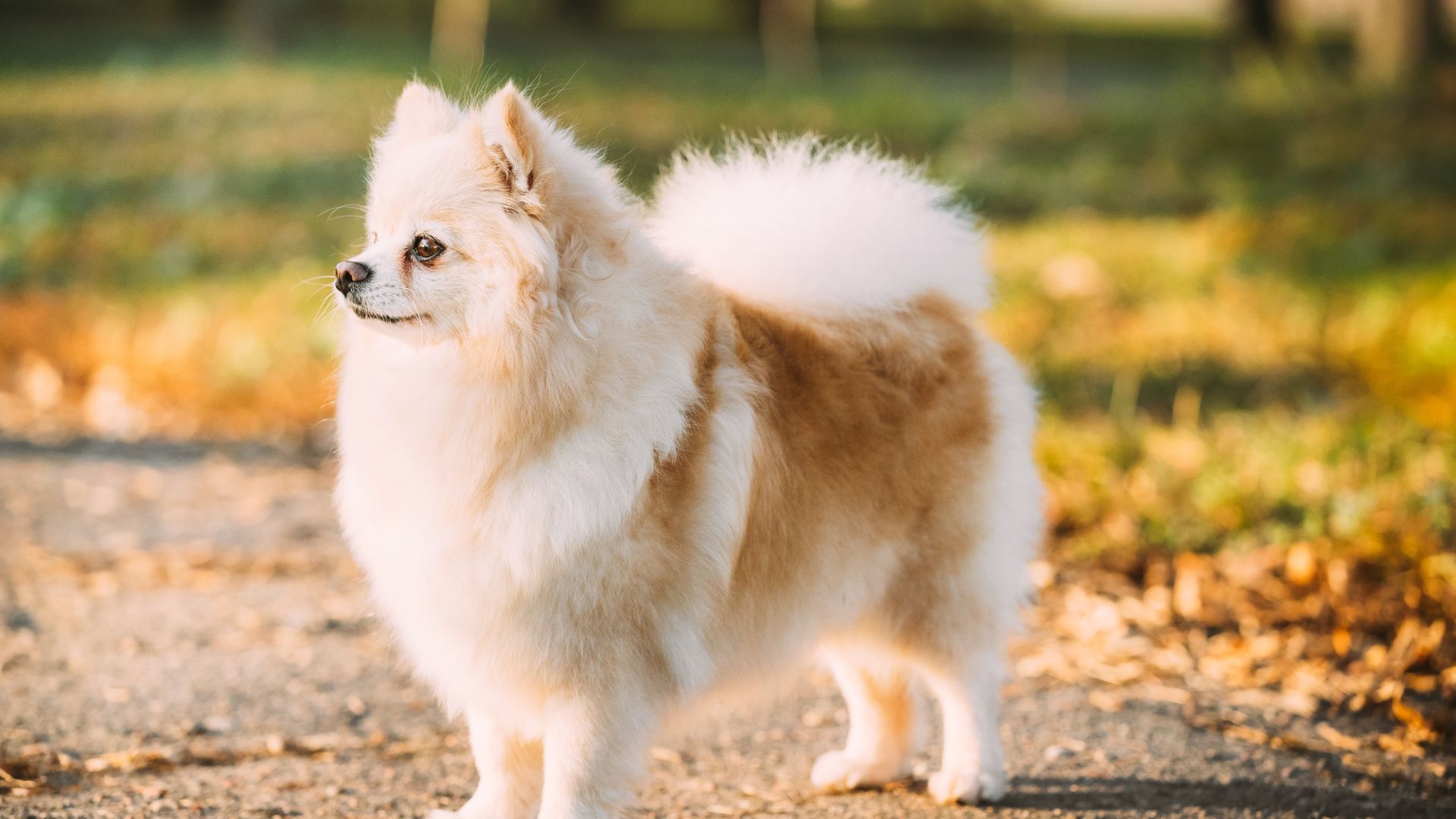
Contents
- 1 TL;DR
- 2 Top 15 Medium Fluffy Dog Breeds
- 2.1 1. Samoyed
- 2.2 2. American Eskimo Dog
- 2.3 3. Keeshond
- 2.4 4. Shetland Sheepdog
- 2.5 5. Finnish Lapphund
- 2.6 6. Australian Shepherd
- 2.7 7. Tibetan Terrier
- 2.8 8. Schapendoes
- 2.9 9. Polish Lowland Sheepdog
- 2.10 10. Lagotto Romagnolo
- 2.11 11. Icelandic Sheepdog
- 2.12 12. Soft Coated Wheaten Terrier
- 2.13 13. Portuguese Water Dog
- 2.14 14. Old English Sheepdog
- 2.15 15. Collie
- 3 Conclusion
TL;DR
This article highlights the top 15 medium fluffy dog breeds, such as the Samoyed, American Eskimo Dog, and Keeshond. It explores their origins, physical traits, temperaments, and grooming needs. These breeds offer a perfect balance of size and personality, making them excellent family pets. Consider energy levels, grooming requirements, and temperament when choosing a breed. Adopt from shelters or rescue organizations to save lives and enjoy a fulfilling experience. These intelligent, affectionate, and versatile breeds thrive in various activities and living situations.
Medium fluffy dog breeds have an undeniable charm that captures the hearts of dog lovers everywhere. Their plush, soft coats and endearing personalities make them irresistible companions. These dogs are not only adorable but also offer the perfect balance between small and large breeds, providing the best of both worlds.
Medium-sized dogs are a perfect balance because they are large enough to enjoy active adventures and small enough to fit comfortably in various living spaces. They are versatile, adaptable, and can thrive in both apartments and houses with yards. This balance in size makes them easier to manage than larger breeds while offering more robustness than smaller ones.
What makes these breeds so lovable? Their friendly and affectionate nature, combined with their playful and intelligent demeanor, ensures they quickly become beloved family members. Many of these breeds are known for their loyalty, eagerness to please, and gentle temperament, making them excellent companions for children and adults alike. Additionally, their beautiful, fluffy coats add to their appeal, making them as pleasant to cuddle with as they are to look at. Whether you’re looking for a spirited playmate or a gentle cuddle buddy, medium fluffy dog breeds offer a wonderful blend of traits that make them truly special.
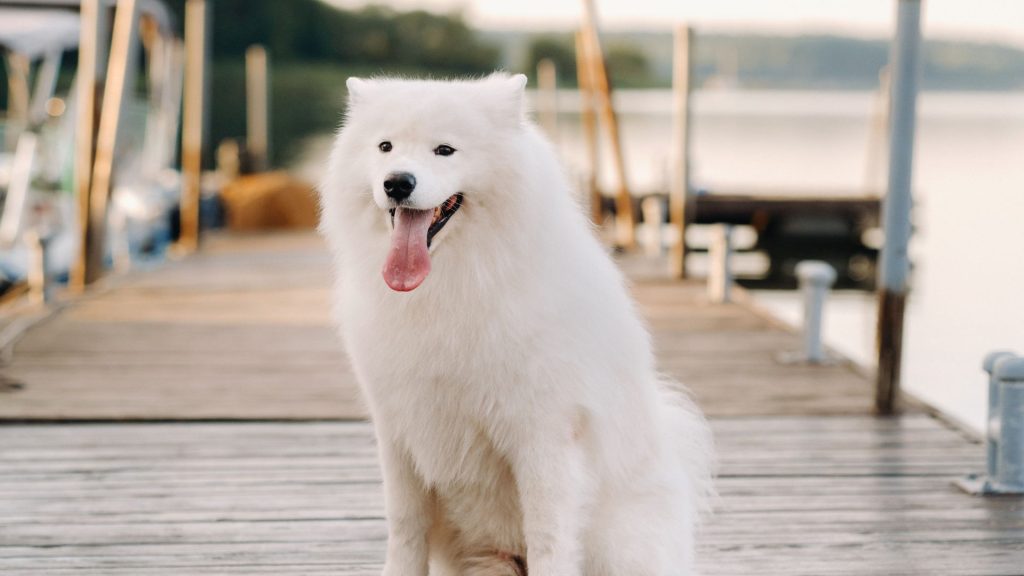
Top 15 Medium Fluffy Dog Breeds
| # | Breed | Origin and History | Physical Characteristics | Temperament and Personality | Grooming and Care Needs |
|---|---|---|---|---|---|
| 1 | Samoyed | Originated in Siberia; used for herding reindeer and sledding. | Thick, white double coat; muscular build; “Sammy smile.” | Friendly, gentle, social; good with children and pets. | Regular brushing; moderate shedding; high exercise needs. |
| 2 | American Eskimo Dog | Descended from German Spitz; popular circus performer. | Dense, white coat; comes in toy, miniature, and standard sizes. | Friendly, intelligent, playful; good watchdogs. | Regular brushing; moderate shedding; daily exercise. |
| 3 | Keeshond | Originated in the Netherlands; symbol of Dutch Patriots. | Thick, double coat; “spectacles” around eyes; bushy tail. | Friendly, affectionate, social; good with children and pets. | Frequent brushing; moderate shedding; regular exercise. |
| 4 | Shetland Sheepdog | Originated in Shetland Islands; used for herding sheep. | Long double coat; small to medium size; fox-like face. | Intelligent, loyal, playful; good with children and pets. | Regular brushing; seasonal shedding; daily exercise. |
| 5 | Finnish Lapphund | Originated in Finland; used for herding reindeer. | Thick double coat; fox-like face; bushy tail. | Friendly, gentle, intelligent; good with children and pets. | Regular brushing; seasonal shedding; daily exercise. |
| 6 | Australian Shepherd | Developed in the United States; herding livestock. | Medium length coat; various colors; expressive eyes. | Intelligent, energetic, loyal; good with active families. | Regular brushing; moderate shedding; high exercise needs. |
| 7 | Tibetan Terrier | Originated in Tibet; kept by monks; herding and guarding. | Long, dense coat; various colors; expressive eyes. | Friendly, affectionate, adaptable; good with children and pets. | Daily brushing; regular bathing; moderate exercise. |
| 8 | Schapendoes | Originated in the Netherlands; used for herding sheep. | Shaggy coat; various colors; medium-sized build. | Lively, intelligent, friendly; good with children and pets. | Daily brushing; regular bathing; high exercise needs. |
| 9 | Polish Lowland Sheepdog | Originated in Poland; herding sheep; nearly extinct in WWII. | Shaggy double coat; various colors; sturdy build. | Lively, intelligent, confident; good with children and pets. | Regular brushing; seasonal shedding; daily exercise. |
| 10 | Lagotto Romagnolo | Originated in Italy; water retriever and truffle hunter. | Curly, water-resistant coat; various colors; muscular build. | Friendly, affectionate, intelligent; good with active families. | Regular brushing; low shedding; high exercise needs. |
| 11 | Icelandic Sheepdog | Originated in Iceland; herding livestock; Viking heritage. | Dense double coat; various colors; bushy tail. | Friendly, cheerful, energetic; good with children and pets. | Regular brushing; seasonal shedding; daily exercise. |
| 12 | Soft Coated Wheaten Terrier | Originated in Ireland; all-purpose farm dog. | Soft, silky coat; wheaten color; sturdy build. | Friendly, outgoing, affectionate; good with children and pets. | Regular brushing; regular trimming; moderate exercise. |
| 13 | Portuguese Water Dog | Originated in Portugal; fishing boat helper. | Curly or wavy coat; various colors; athletic build. | Friendly, energetic, intelligent; good with active families. | Regular brushing; regular trimming; high exercise needs. |
| 14 | Old English Sheepdog | Originated in England; drover’s dog; farm helper. | Thick, shaggy coat; gray, blue, or blue merle; large build. | Friendly, gentle, playful; good with children and pets. | Frequent brushing; regular grooming; moderate exercise. |
| 15 | Collie | Originated in Scotland and Northern England; herding sheep. | Long (Rough) or short (Smooth) coat; various colors; graceful build. | Gentle, friendly, loyal; good with children and pets. | Regular brushing; seasonal shedding; daily exercise. |
1. Samoyed
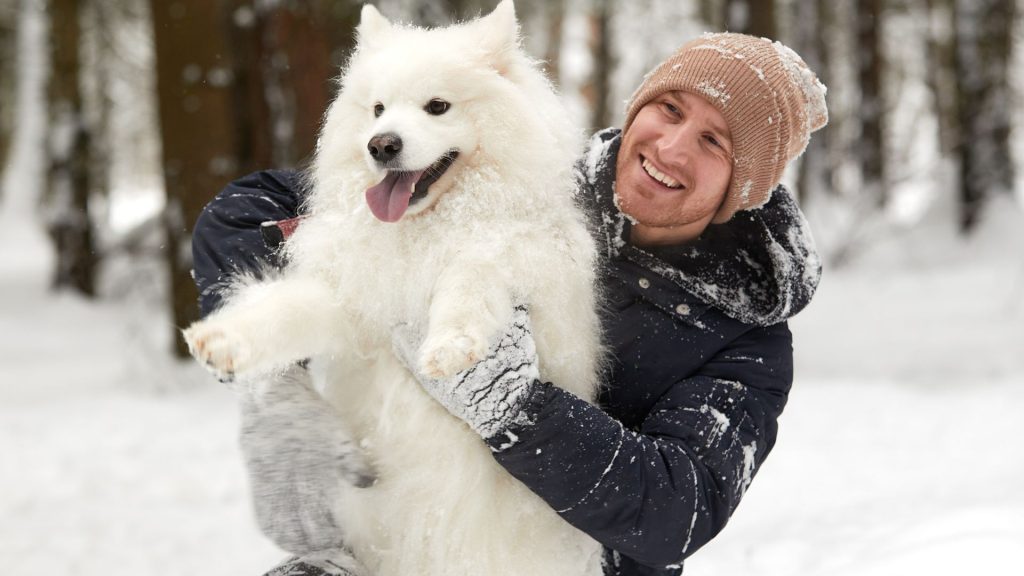
The Samoyed breed originated from Siberia, where they were bred by the indigenous Samoyede people. These dogs were essential to the Samoyede way of life, serving as herding dogs, sled pullers, and loyal companions. Known for their endurance and ability to work in harsh Arctic conditions, Samoyeds were instrumental in Arctic expeditions. Their history is rich with stories of survival, loyalty, and the strong bond they formed with their human families.
Physical Characteristics
Samoyeds are easily recognizable by their thick, fluffy white coat that helps them withstand freezing temperatures. They have a robust, muscular build, with males typically weighing between 45-65 pounds and females between 35-50 pounds. One of their most charming features is their “Sammy smile,” a slightly upturned mouth that gives them a perpetually happy expression. Their dark, almond-shaped eyes and erect ears contribute to their alert and friendly appearance.
Temperament and Personality
Samoyeds are known for their friendly and gentle temperament. They are social dogs that thrive on human companionship and are known to be great with children and other pets. Their playful and energetic nature makes them excellent family dogs. Samoyeds are also highly intelligent and eager to please, which makes them relatively easy to train, though their independent streak can sometimes present a challenge. Their history as working dogs means they require plenty of mental and physical stimulation to stay happy and healthy.
Grooming and Care Needs
The Samoyed’s beautiful coat requires regular grooming to keep it in top condition. They shed heavily, especially during seasonal changes, and will need brushing several times a week to prevent matting and to manage shedding. Bathing should be done as needed, but not too frequently, as over-bathing can strip their coat of natural oils. In addition to coat care, regular dental hygiene, ear checks, and nail trimming are essential. Due to their high energy levels, Samoyeds also need regular exercise to prevent boredom and maintain their physical health. Long walks, playtime, and even opportunities for sledding or carting can help meet their exercise needs.
2. American Eskimo Dog
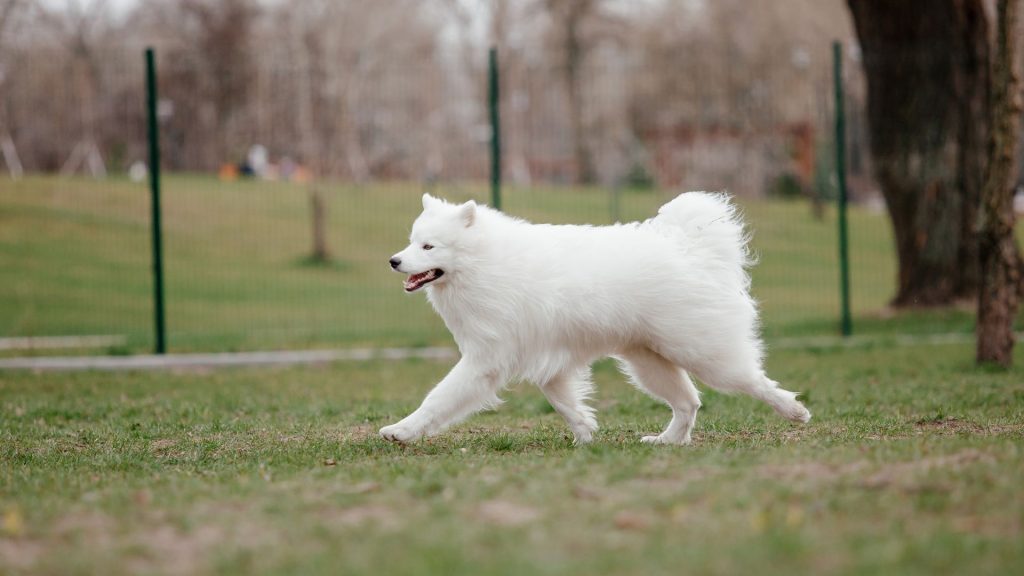
The American Eskimo Dog, despite its name, did not originate in Alaska nor was it used by the Eskimos. This breed’s roots trace back to Germany, where it descended from the German Spitz. Brought to America by German immigrants in the 19th century, the breed gained popularity and eventually became known as the American Eskimo Dog. The name change occurred during World War I due to anti-German sentiment. The American Eskimo Dog became famous for its role in circus performances in the early 20th century, showcasing its intelligence and agility.
Physical Characteristics
American Eskimo Dogs come in three sizes: Toy, Miniature, and Standard. Despite their size variations, they share common features, including a dense, double-layered coat that is always white or white with biscuit cream. They have a distinctive fluffy appearance, with a lion-like mane around their neck and a plume-like tail that curls over their back. Their eyes are dark and expressive, their ears erect, and their overall build is compact and well-proportioned. The Standard size typically weighs between 25-35 pounds, while the Miniature and Toy versions are smaller.
Temperament and Personality
Known for their friendly and affectionate nature, American Eskimo Dogs make excellent family pets. They are highly intelligent, eager to please, and quick learners, which makes them easy to train. Their playful and energetic disposition means they enjoy plenty of interaction and activities. Eskies are also known for their alertness and make good watchdogs, though they are generally not aggressive. They thrive on human companionship and can suffer from separation anxiety if left alone for long periods. Their sociable nature extends to children and other pets, making them versatile family members.
Grooming and Care Needs
The American Eskimo Dog’s beautiful coat requires regular grooming to maintain its health and appearance. They shed moderately year-round and more heavily during seasonal changes. Regular brushing, at least two to three times a week, helps prevent matting and reduces shedding. Bathing should be done as necessary, but over-bathing should be avoided to prevent stripping their coat of natural oils.
Their teeth should be brushed regularly to prevent dental issues, and their ears checked for debris and cleaned as needed. Regular nail trimming is also essential. In terms of exercise, American Eskimo Dogs are active and need daily physical activity to stay happy and healthy. Long walks, playtime, and mentally stimulating activities like obedience training or puzzle toys are ideal to keep them engaged and fit.
3. Keeshond
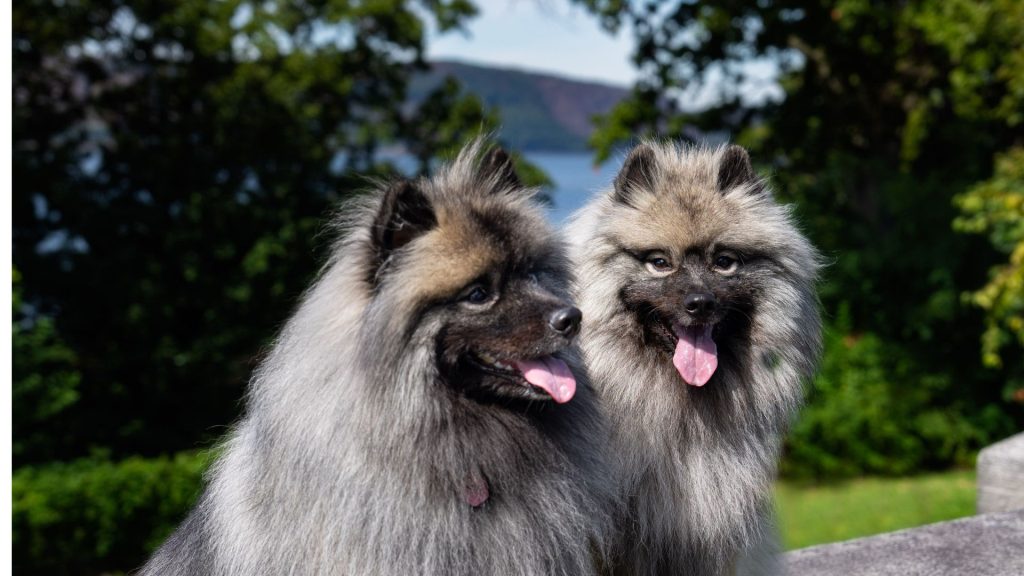
The Keeshond is a Dutch breed with a history dating back several centuries. Originally known as the “barge dog,” Keeshonden were commonly found on Dutch barges, serving as watchdogs and companions. The breed played a notable role in Dutch history during the 18th century as the symbol of the Patriot faction in the Netherlands, led by Cornelis (Kees) de Gyselaer. Despite their early political significance, Keeshonden transitioned into beloved family pets over time. Their popularity spread beyond the Netherlands, and they were eventually recognized by kennel clubs around the world.
Physical Characteristics
Keeshonden are medium-sized dogs with a distinctive appearance. They have a thick, double-layered coat that is primarily gray and black, with a striking ruff around the neck and a bushy tail that curls over the back. Their expressive face features dark, almond-shaped eyes and small, erect ears. One of the breed’s most notable characteristics is their “spectacles,” which are markings and shading around their eyes that give them an intelligent and alert expression. Males typically weigh between 45-60 pounds, while females are slightly smaller, weighing between 35-45 pounds.
Temperament and Personality
Keeshonden are known for their friendly and affectionate nature. They are highly social dogs that form strong bonds with their families and thrive on human interaction. Their playful and energetic demeanor makes them excellent companions for children and other pets. Keeshonden are also intelligent and eager to please, making them relatively easy to train. They are naturally alert and make good watchdogs, though they are generally not aggressive. Their cheerful and outgoing personality ensures they get along well with most people and animals they meet.
Grooming and Care Needs
The Keeshond’s luxurious coat requires regular grooming to keep it in top condition. They shed moderately year-round and experience heavier shedding periods, typically twice a year. To manage their coat, regular brushing is essential, at least two to three times a week, to prevent matting and reduce shedding. During heavy shedding periods, more frequent brushing may be needed. Bathing should be done as necessary, but not too often, to avoid stripping their coat of natural oils. Dental care, including regular brushing, is important to prevent dental issues
Ears should be checked regularly for debris and cleaned as needed, and nails should be trimmed regularly to prevent overgrowth. Keeshonden are moderately active dogs and require daily exercise to stay healthy and happy. Long walks, playtime, and engaging activities like obedience training or agility exercises are ideal for keeping them physically and mentally stimulated.
4. Shetland Sheepdog

The Shetland Sheepdog, affectionately known as the Sheltie, comes from the Shetland Islands off the northeast coast of Scotland. Originally bred to herd sheep, breeders developed Shelties by crossbreeding Border Collies with small, intelligent native dogs. Their compact size made them ideal for working in the harsh, rugged terrain of the Shetland Islands, where resources were scarce, and smaller livestock were common. The breed gained recognition in the early 20th century and eventually evolved into the Shetland Sheepdog we know today, celebrated for its agility, intelligence, and loyalty.
Physical Characteristics
Shetland Sheepdogs are small to medium-sized dogs with a striking, elegant appearance. They have a double coat, with a long, straight outer coat and a dense, soft undercoat. Their fur is typically marked with a combination of black, blue merle, or sable with white and tan accents. Shelties have a refined head with a slightly tapered muzzle, expressive almond-shaped eyes, and small, erect ears that tip forward. They are well-proportioned and agile, with males weighing between 14-27 pounds and females weighing slightly less.
Temperament and Personality
Shelties are known for their bright, affectionate, and loyal nature. They form strong bonds with their families and are particularly good with children. Shetland Sheepdogs are highly intelligent and eager to please, making them exceptionally trainable. They excel in obedience, agility, and herding activities. Shelties are also naturally alert and make excellent watchdogs, although they are typically reserved rather than aggressive with strangers. Their gentle and sensitive temperament means they respond best to positive reinforcement training methods. Shelties are playful and energetic, requiring mental stimulation to prevent boredom and ensure their well-being.
Grooming and Care Needs
The Shetland Sheepdog’s beautiful coat requires regular grooming to maintain its health and appearance. They shed moderately throughout the year, with more intense shedding occurring seasonally. Brush Shelties several times a week to prevent matting and reduce shedding, paying special attention to areas like behind the ears, under the legs, and around the neck where tangles can form. Bathe them as necessary, but avoid over-bathing to prevent stripping their coat of natural oils.
Regular dental care, including brushing, helps prevent dental issues. Check their ears regularly for debris and clean them as needed. Trim their nails regularly to prevent overgrowth. Shelties are active dogs that require daily exercise to stay healthy and happy. Engage them in long walks, playtime, and activities like obedience training or agility exercises to keep them physically and mentally stimulated.
5. Finnish Lapphund
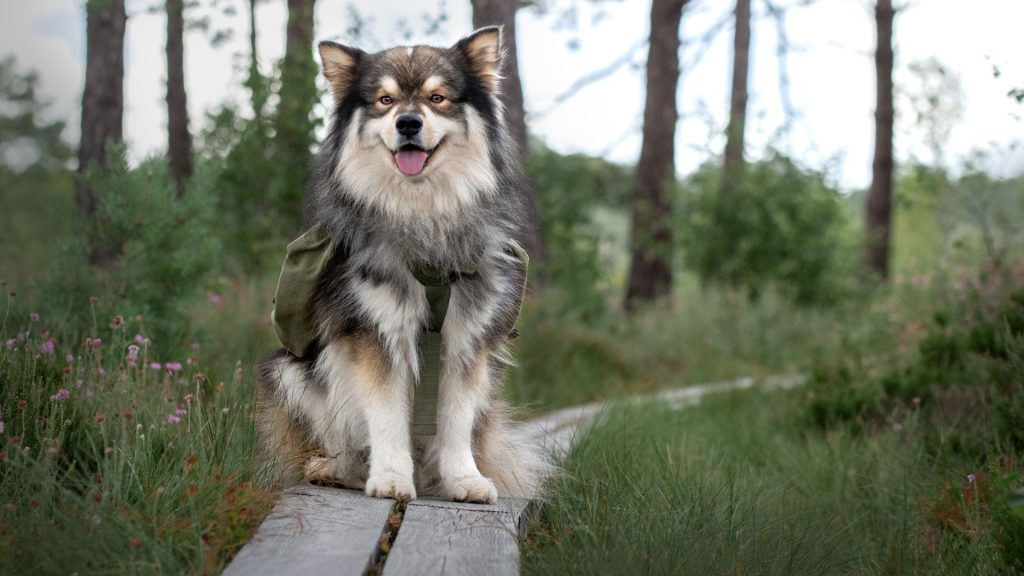
The Finnish Lapphund is an ancient breed originating from the Arctic regions of Finland, where the Sami people traditionally used them for herding reindeer. These hardy dogs have a history that spans thousands of years, adapting to the harsh climates of the northern Scandinavian wilderness. Their herding skills and ability to work in extreme conditions made them indispensable to the Sami. In the 20th century, breeders standardized the breed, and kennel clubs recognized them, transforming the Finnish Lapphund into a beloved family pet known for its friendly and adaptable nature.
Physical Characteristics
The Finnish Lapphund is a medium-sized dog with a sturdy and robust build, well-suited for its traditional herding work in cold climates. They have a thick double coat that provides excellent insulation, with a soft, dense undercoat and a longer, harsher outer coat. Their fur can come in a variety of colors, including black, brown, and tan, often with distinctive markings. Finnish Lapphunds have a fox-like face with expressive, almond-shaped eyes and erect, triangular ears. Their tails are bushy and often carried curled over their back. Males typically weigh between 33-53 pounds, while females are slightly lighter.
Temperament and Personality
Finnish Lapphunds are known for their friendly, gentle, and intelligent temperament. These highly social dogs thrive on human companionship and are excellent with children and other pets. Their herding background makes them alert and responsive, but they are generally not aggressive. Finnish Lapphunds exhibit patience and a calm demeanor, making them well-suited for family life. Their intelligence and eagerness to learn make them relatively easy to train. Their playful and affectionate nature endears them to everyone they meet, and they are particularly good with children.
Grooming and Care Needs
The Finnish Lapphund’s thick double coat requires regular grooming to keep it in top condition. They shed moderately year-round and more heavily during seasonal changes. Regular brushing, at least two to three times a week, helps prevent matting and reduces shedding. During heavy shedding periods, more frequent brushing may be necessary. Bathing should be done as needed, but over-bathing should be avoided to maintain the natural oils in their coat. Regular dental care, including brushing their teeth, is important to prevent dental issues.
Their ears should be checked regularly for debris and cleaned as needed, and nails should be trimmed regularly to prevent overgrowth. Finnish Lapphunds are active dogs that require daily exercise to stay healthy and happy. They enjoy long walks, playtime, and mentally stimulating activities like obedience training or puzzle toys. Providing them with enough physical and mental stimulation helps prevent boredom and keeps them well-behaved and content.
6. Australian Shepherd
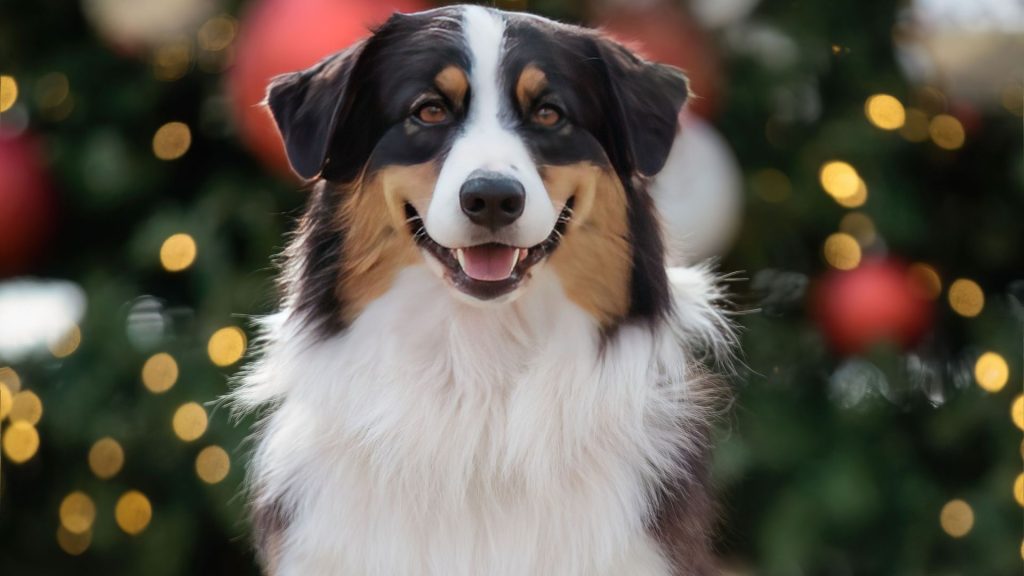
Despite its name, the Australian Shepherd, often affectionately called the “Aussie,” was developed in the United States. The breed’s origins trace back to the 19th century when ranchers and farmers primarily used them for herding livestock. The breed’s ancestors likely include various types of collies and shepherd dogs brought to America by European settlers. The name “Australian Shepherd” probably comes from the association with Basque shepherds who came to America from Australia. Known for their exceptional herding abilities and versatility, Australian Shepherds quickly became indispensable working dogs on American ranches.
Physical Characteristics
Australian Shepherds are medium-sized dogs known for their striking appearance and athletic build. They have a well-proportioned body, with males typically weighing between 50-65 pounds and females weighing slightly less, between 40-55 pounds. Their coat is of medium length and can be straight or wavy, coming in a variety of colors including blue merle, red merle, black, and red, often with white and tan markings. Aussies have expressive eyes that can be brown, blue, amber, or even one of each, contributing to their unique look. Their ears are medium-sized and set high, and they often have a docked tail, though some are naturally bob-tailed.
Temperament and Personality
Australian Shepherds are known for their intelligence, energy, and trainability. They are highly versatile and excel in various activities such as herding, agility, obedience, and even search and rescue. Aussies are loyal and affectionate with their families, often forming strong bonds with their owners. They are also protective and make good watchdogs, though they are typically reserved rather than aggressive with strangers. Their high energy levels and intelligence mean they require plenty of mental and physical stimulation to prevent boredom and destructive behaviors. Australian Shepherds are playful and enjoy engaging in activities with their families, making them excellent companions for active households.
Grooming and Care Needs
The Australian Shepherd’s coat requires regular grooming to keep it in good condition. They shed year-round, with more intense shedding occurring seasonally. Regular brushing, at least two to three times a week, helps prevent matting and reduces shedding. During heavy shedding periods, more frequent brushing may be necessary. Bathing should be done as needed, but over-bathing should be avoided to maintain the natural oils in their coat. Regular dental care, including brushing their teeth, is important to prevent dental issues.
Their ears should be checked regularly for debris and cleaned as needed, and nails should be trimmed regularly to prevent overgrowth. Australian Shepherds are highly active dogs that require substantial daily exercise. Long walks, runs, and activities like agility training or playing fetch are ideal for keeping them physically and mentally stimulated. Providing them with enough exercise and mental challenges helps ensure they remain happy, healthy, and well-behaved.
7. Tibetan Terrier
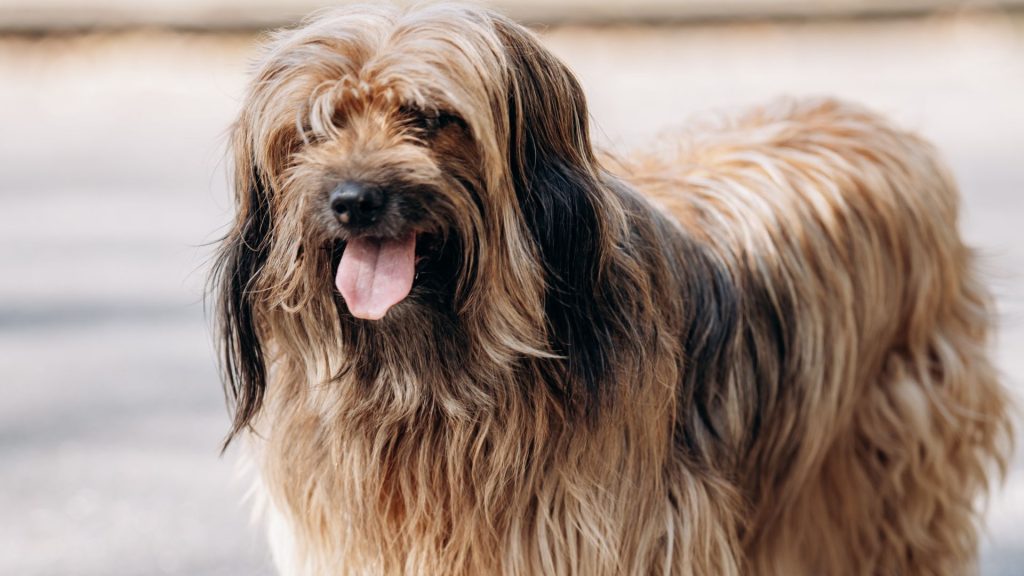
The Tibetan Terrier, often referred to as the “Holy Dog of Tibet,” has a history that dates back over 2,000 years. Tibetan monks originally bred and kept these dogs, considering them good luck charms that were never sold, only given as gifts. They used them for herding livestock, guarding monasteries, and as companions and watchdogs. Despite their name, Tibetan Terriers are not true terriers; they were named for their similar size and appearance to terrier breeds. They made their way to the Western world in the early 20th century and have since become cherished family pets.
Physical Characteristics
Tibetan Terriers are medium-sized dogs with a sturdy, square build. They typically weigh between 20-24 pounds and stand about 14-17 inches tall at the shoulder. Their most distinctive feature is their long, double coat, which can come in a variety of colors including white, black, gold, brindle, and combinations of these. Their fur is fine and can be either straight or wavy, providing excellent protection against harsh weather. Tibetan Terriers have a unique foot structure, with large, flat feet that aid in navigating snowy terrain. Their eyes are large, dark, and set wide apart, giving them an expressive and intelligent look. The ears are pendant-shaped, and their tails are well-feathered and curl over their backs.
Temperament and Personality
Tibetan Terriers are known for their friendly, affectionate, and adaptable nature. They form strong bonds with their families and are good with children and other pets. Intelligent and alert, Tibetan Terriers make excellent watchdogs without being overly aggressive. They are playful and energetic, enjoying interactive play and activities. While they can be independent and occasionally stubborn, their eagerness to please generally makes them trainable. Their gentle and loving disposition makes them wonderful companions who thrive on human interaction and companionship.
Grooming and Care Needs
The Tibetan Terrier’s long, luxurious coat requires regular grooming to keep it healthy and free of mats. Daily brushing prevents tangles and reduces shedding, with special attention to areas prone to matting, such as behind the ears and under the legs. Regular bathing keeps their coat clean, but avoid over-bathing to prevent stripping natural oils. Brush their teeth regularly to prevent dental issues, and check and clean their ears as needed to avoid infections.
Regular nail trimming prevents overgrowth. Tibetan Terriers are moderately active dogs that need regular exercise to stay healthy and happy. Daily walks, playtime, and mentally stimulating activities like puzzle toys or obedience training keep them engaged and well-behaved. Providing a balanced diet and regular veterinary check-ups ensures they live a long, healthy life.
8. Schapendoes
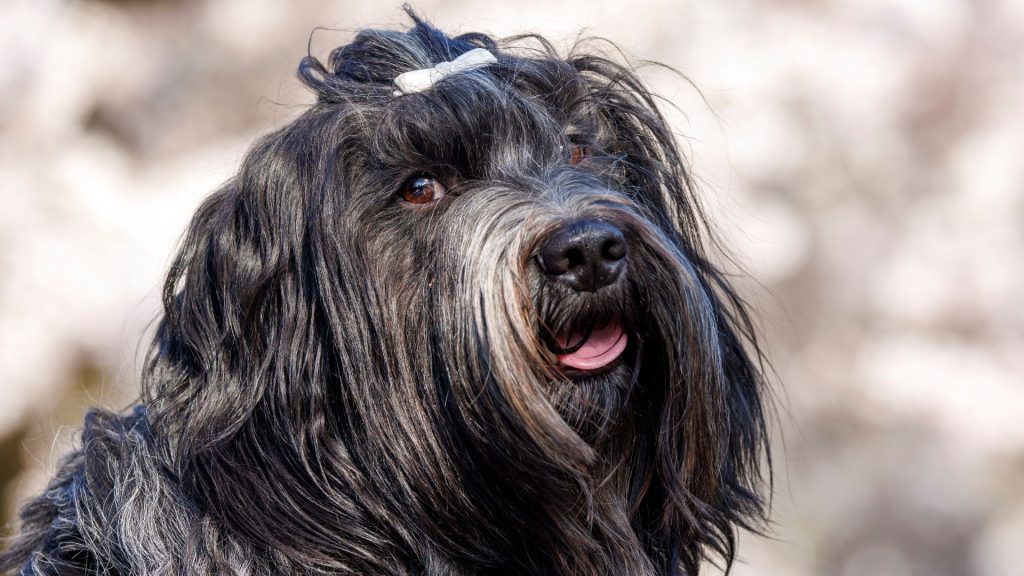
The Schapendoes, also known as the Dutch Sheepdog, is a herding breed that originated in the Netherlands. Dating back to the 19th century, shepherds used these dogs for their excellent herding abilities and agility. Schapendoes were almost lost during World War II, but dedicated breeders revived the breed post-war. The Dutch Kennel Club officially recognized the breed in the 1950s. Known for their work ethic and versatility, Schapendoes have a rich history rooted in pastoral life and continue to be valued as both working dogs and family pets.
Physical Characteristics
The Schapendoes is a medium-sized dog with a distinctive, shaggy appearance. They typically weigh between 30-50 pounds and stand about 16-20 inches tall at the shoulder. Their coat is long, dense, and slightly wavy, providing ample protection against harsh weather conditions. The fur covers their entire body, including their face, giving them a charming, somewhat rustic look. Schapendoes have a well-proportioned, athletic build, with a broad head, expressive dark eyes, and high-set ears that hang down. Their tail is bushy and carried in a slight curve when at rest.
Temperament and Personality
Schapendoes are known for their lively, intelligent, and friendly temperament. They are highly social dogs that thrive on interaction with their families and are known to be excellent with children and other pets. Their herding background means they are alert and responsive, making them good watchdogs. Schapendoes are also very playful and energetic, enjoying a variety of activities and games. Their intelligence and eagerness to please make them relatively easy to train, although they may sometimes display an independent streak. Schapendoes are known for their cheerful disposition and adaptability, making them wonderful companions for active families.
Grooming and Care Needs
The Schapendoes’ long, shaggy coat requires regular grooming to prevent matting and keep it looking its best. Daily brushing is recommended to remove tangles and reduce shedding. Bathing should be done as needed, but not too frequently, to maintain the natural oils in their coat. Regular dental care, including brushing their teeth, is important to prevent dental issues. Their ears should be checked regularly for debris and cleaned as needed to avoid infections. Nail trimming should be done regularly to prevent overgrowth.
Schapendoes are active dogs that need plenty of exercise to stay healthy and happy. Daily walks, playtime, and activities like agility training or herding exercises are ideal for keeping them physically and mentally stimulated. Providing them with a balanced diet and regular veterinary check-ups will help ensure they live a long, healthy life.
9. Polish Lowland Sheepdog
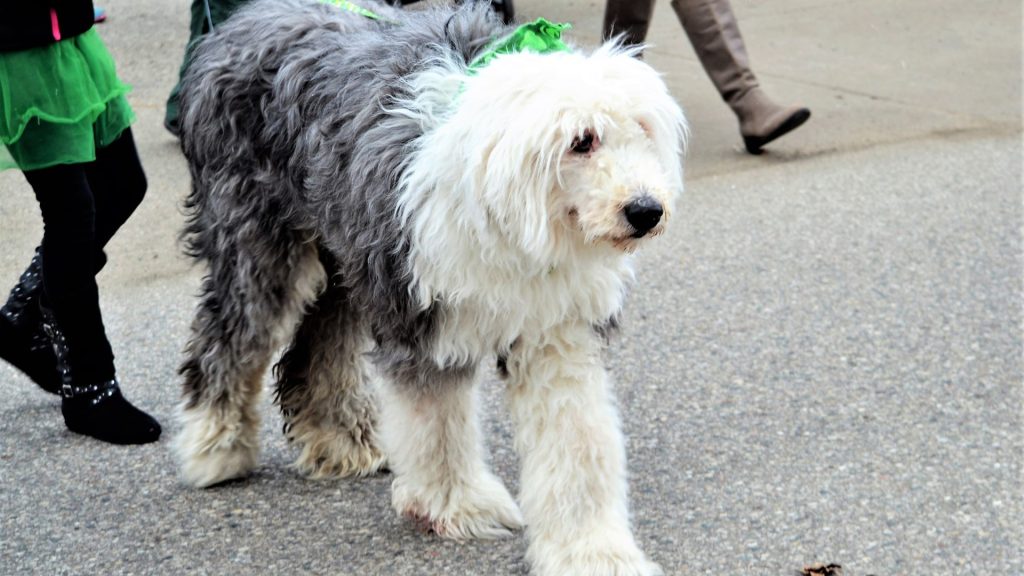
The Polish Lowland Sheepdog, also known as the PON (Polski Owczarek Nizinny), is a herding breed that originated in Poland. Dating back to the Middle Ages, shepherds primarily used them for herding and guarding sheep. The breed likely descends from ancient Central Asian herding dogs brought to Poland by nomadic tribes. Polish shepherds highly valued Polish Lowland Sheepdogs for their intelligence, agility, and strong herding instincts. Although the breed nearly disappeared during World War II, dedicated breeders worked to restore its population. Today, major kennel clubs recognize the Polish Lowland Sheepdog, and it remains a popular working and companion dog.
Physical Characteristics
Polish Lowland Sheepdogs are medium-sized dogs with a sturdy and muscular build. They typically weigh between 30-50 pounds and stand about 17-20 inches tall at the shoulder. One of the breed’s most distinctive features is its long, dense, and shaggy coat, which provides excellent protection against harsh weather. The coat can come in various colors, including white, gray, black, and brown, often with patches or markings. Their expressive, oval-shaped eyes are usually hidden beneath their long bangs, and their ears are medium-sized and set high, hanging down close to the cheeks. The tail can be naturally short or docked, depending on the country’s breed standards.
Temperament and Personality
Polish Lowland Sheepdogs are known for their lively, intelligent, and confident temperament. They are highly trainable and possess a strong work ethic, making them excellent herding dogs. Despite their working background, they are also affectionate and loyal companions. PONs are known for their alertness and make excellent watchdogs, as they are naturally protective of their families. They are good with children and can get along well with other pets when properly socialized. Their intelligence and independent nature can sometimes make them a bit stubborn, so consistent training and positive reinforcement are essential. Overall, they are playful, energetic, and thrive on human interaction.
Grooming and Care Needs
The Polish Lowland Sheepdog’s long, shaggy coat requires regular grooming to prevent matting and keep it looking its best. Brushing several times a week is necessary to remove tangles and reduce shedding. During shedding seasons, more frequent grooming may be needed. Bathing should be done as necessary, but over-bathing should be avoided to maintain the natural oils in their coat. Regular dental care, including brushing their teeth, is important to prevent dental issues. Their ears should be checked regularly for debris and cleaned as needed to avoid infections. Nail trimming should be done regularly to prevent overgrowth.
Polish Lowland Sheepdogs are active dogs that require plenty of exercise to stay healthy and happy. Daily walks, playtime, and activities like obedience training or herding exercises are ideal for keeping them physically and mentally stimulated. Providing them with a balanced diet and regular veterinary check-ups will help ensure they live a long, healthy life.
10. Lagotto Romagnolo
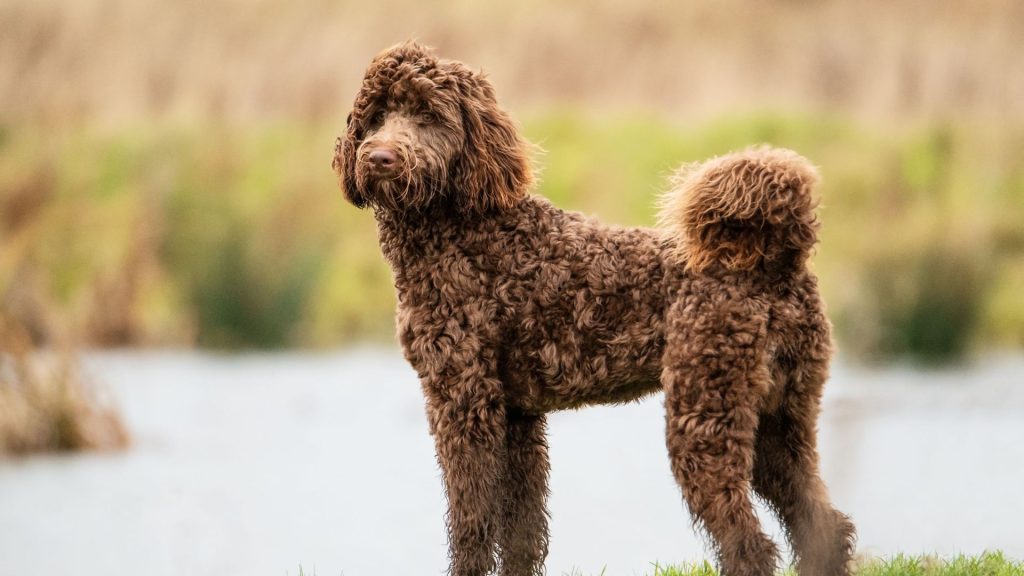
The Lagotto Romagnolo is an ancient breed from the Romagna region of Italy, dating back to at least the Renaissance period. Initially used as a waterfowl retriever in Italy’s marshlands, the breed transitioned to truffle hunting in the 19th century as the marshlands were drained. Its keen sense of smell and natural digging ability made the Lagotto Romagnolo an excellent truffle hunter, a role it still excels in today. Recognized as one of the oldest known water dog breeds, the Lagotto Romagnolo has been officially acknowledged by various kennel clubs worldwide.
Physical Characteristics
The Lagotto Romagnolo is a medium-sized dog with a robust and rustic appearance. They typically weigh between 24-35 pounds and stand about 16-19 inches tall at the shoulder. One of their most distinctive features is their dense, curly coat, which is woolly in texture and water-resistant. The coat comes in various colors, including brown, off-white, orange, and roan, with or without white markings. Their expressive, round eyes can be brown or dark yellow, and their ears are medium-sized, triangular, and hang close to the head. Lagottos have a well-proportioned body with a strong, muscular build, and their tails are medium in length, tapering to a point.
Temperament and Personality
Lagotto Romagnolos are known for their friendly, affectionate, and intelligent nature. They are highly trainable and eager to please, making them excellent companions and working dogs. Their natural curiosity and keen sense of smell make them exceptional truffle hunters. Lagottos are also very social and bond closely with their families, often displaying a playful and loving demeanor. They are good with children and can get along well with other pets when properly socialized. While they are generally friendly with strangers, they are also alert and can serve as good watchdogs. Their high energy levels and intelligence mean they require regular mental and physical stimulation to stay happy and well-behaved.
Grooming and Care Needs
The Lagotto Romagnolo’s curly coat requires regular grooming to keep it in good condition and prevent matting. Brushing several times a week is necessary, and professional grooming every few months can help maintain their coat’s health and appearance. Their coat is hypoallergenic and does not shed much, making them a good choice for people with allergies. Regular bathing should be done as needed, but not too frequently, to avoid stripping the coat of natural oils. Dental care, including regular brushing of their teeth, is important to prevent dental issues.
Their ears should be checked regularly for debris and cleaned as needed to avoid infections. Nail trimming should be done regularly to prevent overgrowth. Lagottos are active dogs that require daily exercise to stay healthy and happy. Long walks, playtime, and mentally stimulating activities like obedience training or truffle hunting are ideal for keeping them engaged and fit. Providing them with a balanced diet and regular veterinary check-ups will help ensure they live a long, healthy life.
11. Icelandic Sheepdog
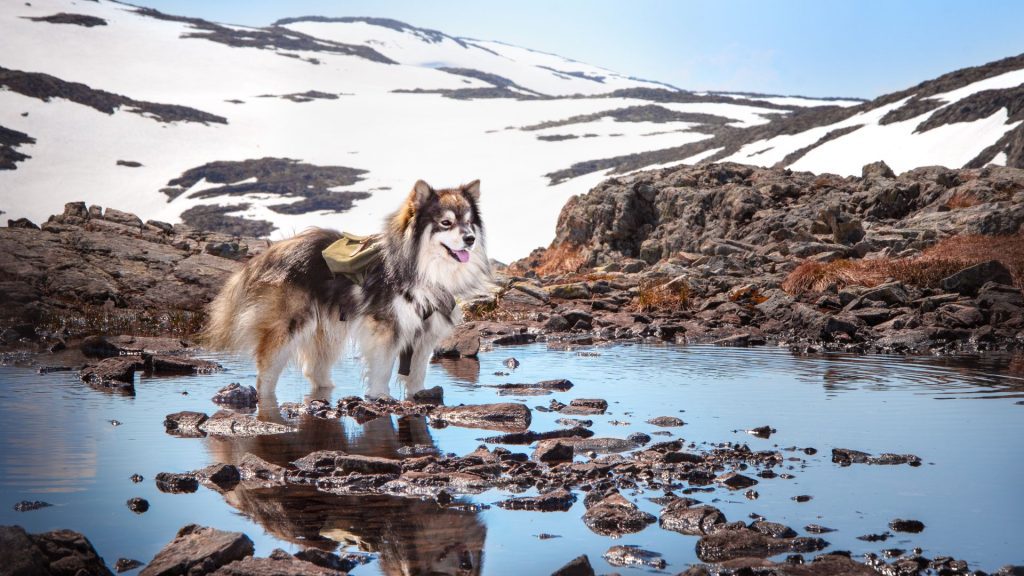
The Icelandic Sheepdog is a hardy, versatile herding breed that originated in Iceland. The breed is believed to have been brought to Iceland by Viking settlers over a thousand years ago, making it one of the oldest dog breeds in the world. Icelandic Sheepdogs were used for herding sheep, cattle, and horses, as well as for guarding the farms. Their ability to work in the rugged terrain and harsh climate of Iceland made them invaluable to the early settlers. The breed faced near extinction in the 20th century, but dedicated efforts by breeders helped to revive its population. Today, the Icelandic Sheepdog is recognized by major kennel clubs and is cherished as both a working dog and a companion animal.
Physical Characteristics
The Icelandic Sheepdog is a medium-sized, spitz-type dog with a robust and sturdy build. They typically weigh between 20-30 pounds and stand about 16-18 inches tall at the shoulder. The breed has a dense double coat that comes in two varieties: long-haired and short-haired. Both types have a thick, water-resistant undercoat and a straight, coarse outer coat. Coat colors can include various shades of tan, ranging from cream to reddish-brown, often with white markings and sometimes black masks or tips. Icelandic Sheepdogs have a fox-like face with expressive, almond-shaped eyes, erect triangular ears, and a bushy tail that curls over their back. Their overall appearance is one of alertness and agility.
Temperament and Personality
Icelandic Sheepdogs are known for their friendly, cheerful, and energetic temperament. They are highly social dogs that form strong bonds with their families and are excellent with children. Their natural herding instincts make them alert and responsive, and they are known to bark to alert their owners of any unusual activity. Despite this, they are generally not aggressive and are friendly with strangers once properly introduced. Icelandic Sheepdogs are intelligent and eager to please, making them relatively easy to train. Their playful and energetic nature means they enjoy a variety of activities and excel in agility, obedience, and other canine sports. They thrive on human interaction and are happiest when included in family activities.
Grooming and Care Needs
The Icelandic Sheepdog’s dense double coat requires regular grooming to keep it healthy and free of mats. Brushing several times a week is recommended to remove loose hair and prevent tangles. During shedding seasons, more frequent brushing may be necessary to manage the increased hair loss. Bathing should be done as needed, but over-bathing should be avoided to maintain the natural oils in their coat. Regular dental care, including brushing their teeth, is important to prevent dental issues.
Their ears should be checked regularly for debris and cleaned as needed to avoid infections. Nail trimming should be done regularly to prevent overgrowth. Icelandic Sheepdogs are active and energetic dogs that require plenty of exercise to stay healthy and happy. Daily walks, playtime, and activities like herding exercises or agility training are ideal for keeping them physically and mentally stimulated. Providing them with a balanced diet and regular veterinary check-ups will help ensure they live a long, healthy life.
12. Soft Coated Wheaten Terrier
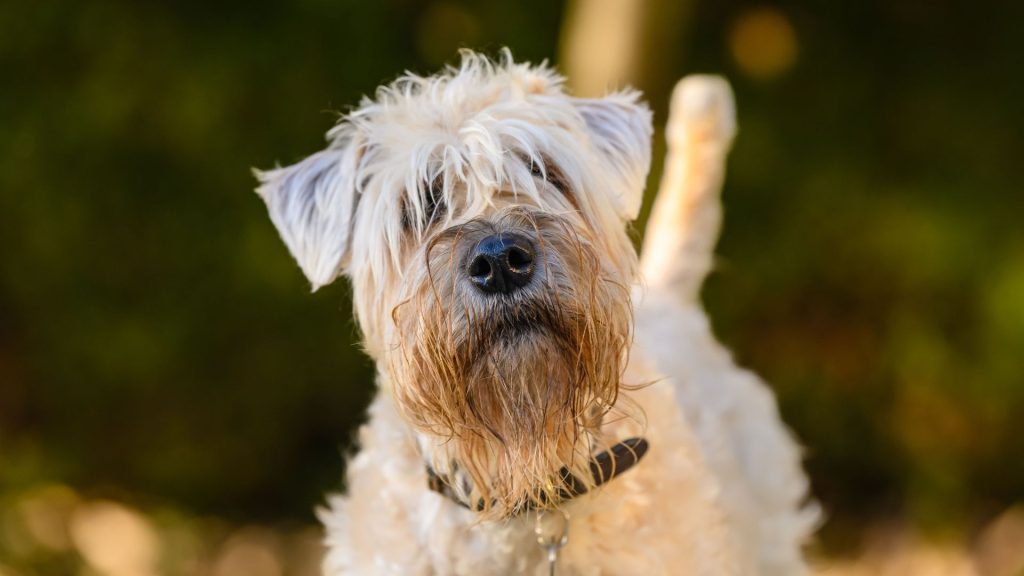
The Soft Coated Wheaten Terrier is a versatile and resilient breed that originated in Ireland. The breed’s history dates back over 200 years, where it was developed as an all-purpose farm dog. Soft Coated Wheaten Terriers were used for herding livestock, guarding property, and hunting vermin. Known for their adaptability and hardworking nature, they became a beloved breed among Irish farmers. The breed was officially recognized by the Irish Kennel Club in the 1930s and later gained recognition in other countries, including the United States, where it has since become a popular companion animal.
Physical Characteristics
Soft Coated Wheaten Terriers are medium-sized dogs with a distinctive, soft, and silky coat. They typically weigh between 30-40 pounds and stand about 17-19 inches tall at the shoulder. Their coat is a single layer of wavy or curly hair that comes in a warm wheaten color, ranging from pale beige to a rich, reddish-gold. The fur is soft to the touch and does not shed excessively, making them a good choice for people with allergies. Soft Coated Wheaten Terriers have a square, sturdy build with a strong, muscular body. Their expressive, dark eyes, and black nose contrast with their lighter coat, giving them a friendly and alert expression. Their ears are small to medium-sized and fold forward, and their tails are typically docked in countries where this practice is allowed.
Temperament and Personality
Soft Coated Wheaten Terriers are known for their friendly, outgoing, and affectionate nature. They form strong bonds with their families and are excellent with children and other pets. Their playful and energetic demeanor makes them wonderful companions for active households. Wheatens are intelligent and eager to please, which makes them relatively easy to train, though they can be somewhat independent and may require consistent, positive reinforcement. They are known for their joyful personality and “Wheaten greetin’,” a term used to describe their enthusiastic greeting behavior. Wheatens are also alert and make good watchdogs, but they are generally not aggressive. They thrive on human interaction and enjoy being involved in family activities.
Grooming and Care Needs
The Soft Coated Wheaten Terrier’s unique coat requires regular grooming to keep it in top condition. Brushing several times a week is necessary to prevent matting and remove loose hair. Regular trimming is also recommended to maintain the coat’s length and shape. Because their coat does not shed much, Wheatens need regular bathing to keep their fur clean and free of debris. Their ears should be checked regularly for debris and cleaned as needed to prevent infections.
Regular dental care, including brushing their teeth, is important to prevent dental issues. Nail trimming should be done regularly to prevent overgrowth. Soft Coated Wheaten Terriers are active dogs that require daily exercise to stay healthy and happy. Long walks, playtime, and activities like obedience training or agility exercises are ideal for keeping them physically and mentally stimulated. Providing them with a balanced diet and regular veterinary check-ups will help ensure they live a long, healthy life.
13. Portuguese Water Dog

The Portuguese Water Dog, also known as “Cão de Água,” originated in Portugal, where it was bred to work on fishing boats. These dogs were essential crew members, helping to herd fish into nets, retrieve lost equipment, and act as couriers between boats and shore. Their strong swimming ability and water-resistant coat made them invaluable to Portuguese fishermen. The breed’s history dates back several centuries, and it is believed to share ancestry with other water dogs and poodles. The Portuguese Water Dog faced near extinction in the 20th century, but dedicated breeders worked to revive the breed. Today, it is recognized by major kennel clubs and has gained popularity as a versatile working dog and companion, famously owned by the Obama family during their time in the White House.
Physical Characteristics
Portuguese Water Dogs are medium-sized dogs with a robust and athletic build. They typically weigh between 35-60 pounds and stand about 17-23 inches tall at the shoulder. One of their most distinctive features is their curly or wavy, water-resistant coat, which comes in various colors, including black, white, brown, and combinations of these. Their coat can be maintained in two styles: the “retriever clip,” where the coat is clipped evenly all over, or the “lion clip,” where the coat on the hindquarters and muzzle is clipped short, leaving the rest of the body with longer fur. They have expressive, dark eyes and high-set, floppy ears. Their tails are thick at the base and taper to a point, often carried in a ring shape.
Temperament and Personality
Portuguese Water Dogs are known for their friendly, energetic, and intelligent nature. They are highly trainable and excel in various activities, including obedience, agility, and water work. Their history as working dogs makes them eager to please and quick learners. They form strong bonds with their families and are good with children and other pets. Portuguese Water Dogs are also known for their playful and lively demeanor, making them excellent companions for active households. They are protective and alert, making good watchdogs, but are generally friendly with strangers once properly introduced. Their high energy levels and need for mental stimulation require regular engagement to keep them happy and well-behaved.
Grooming and Care Needs
The Portuguese Water Dog’s coat requires regular grooming to keep it healthy and free of mats. Brushing several times a week is necessary to prevent tangles and maintain the coat’s condition. Regular trimming, either in the retriever or lion clip, is also recommended to manage their fur’s length and appearance. Bathing should be done as needed, but over-bathing should be avoided to preserve the natural oils in their coat. Their ears should be checked regularly for debris and cleaned as needed to prevent infections.
Regular dental care, including brushing their teeth, is important to prevent dental issues. Nail trimming should be done regularly to prevent overgrowth. Portuguese Water Dogs are active and energetic, requiring daily exercise to stay healthy and happy. Long walks, runs, playtime, and activities like swimming or agility training are ideal for keeping them physically and mentally stimulated. Providing them with a balanced diet and regular veterinary check-ups will help ensure they live a long, healthy life.
14. Old English Sheepdog
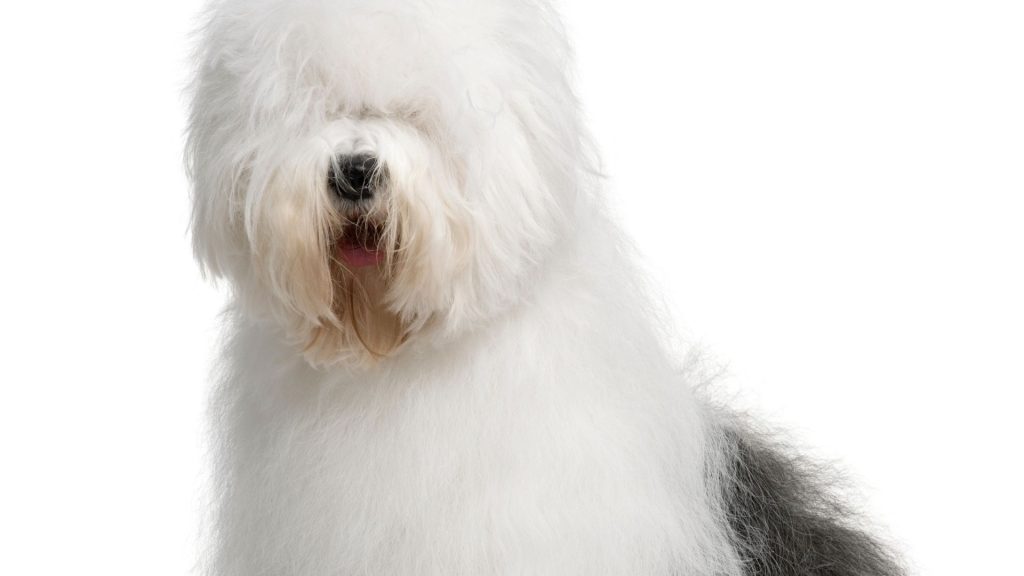
The Old English Sheepdog, often affectionately called the “Bobtail” due to its traditionally docked tail, originated in England in the early 19th century. The breed was developed as a drover’s dog, used to drive sheep and cattle to market. Their dense, weather-resistant coat protected them while working in various conditions. The exact lineage of the Old English Sheepdog is not well-documented, but it is believed to have descended from early herding breeds in the British Isles. The breed gained popularity not only for its working abilities but also for its distinctive and appealing appearance. Today, Old English Sheepdogs are recognized by major kennel clubs and are cherished as both working dogs and family companions.
Physical Characteristics
Old English Sheepdogs are large, sturdy dogs with a distinctive shaggy appearance. They typically weigh between 60-100 pounds and stand about 21-24 inches tall at the shoulder. Their most notable feature is their long, thick, double coat, which is usually gray, grizzle, blue, or blue merle with white markings. The fur covers their entire body, including their eyes, giving them a characteristic “shaggy dog” look. Their eyes can be dark or blue, and their ears are medium-sized, hanging down close to the head. The tail is often docked, although in some countries, it is left natural. Old English Sheepdogs have a muscular build and a distinctive, rolling gait.
Temperament and Personality
Old English Sheepdogs are known for their friendly, gentle, and playful nature. They form strong bonds with their families and are particularly good with children, earning them the nickname “nanny dogs.” Their calm and adaptable temperament makes them excellent family pets. Despite their size, they are known to be quite gentle and affectionate. Old English Sheepdogs are intelligent and eager to please, which makes them relatively easy to train, though they can sometimes display a stubborn streak. They are also known for their protective instincts and make good watchdogs, alerting their owners to any unusual activity. However, they are generally not aggressive and are friendly with strangers once properly introduced.
Grooming and Care Needs
The Old English Sheepdog’s thick, double coat requires regular grooming to keep it healthy and free of mats. Brushing several times a week is necessary to prevent tangles and reduce shedding. Professional grooming every few months can help manage the coat’s length and maintain its condition. Bathing should be done as needed, but over-bathing should be avoided to maintain the natural oils in their coat. Regular dental care, including brushing their teeth, is important to prevent dental issues.
Their ears should be checked regularly for debris and cleaned as needed to avoid infections. Nail trimming should be done regularly to prevent overgrowth. Old English Sheepdogs are active dogs that require daily exercise to stay healthy and happy. Long walks, playtime, and activities like obedience training or herding exercises are ideal for keeping them physically and mentally stimulated. Providing them with a balanced diet and regular veterinary check-ups will help ensure they live a long, healthy life.
15. Collie
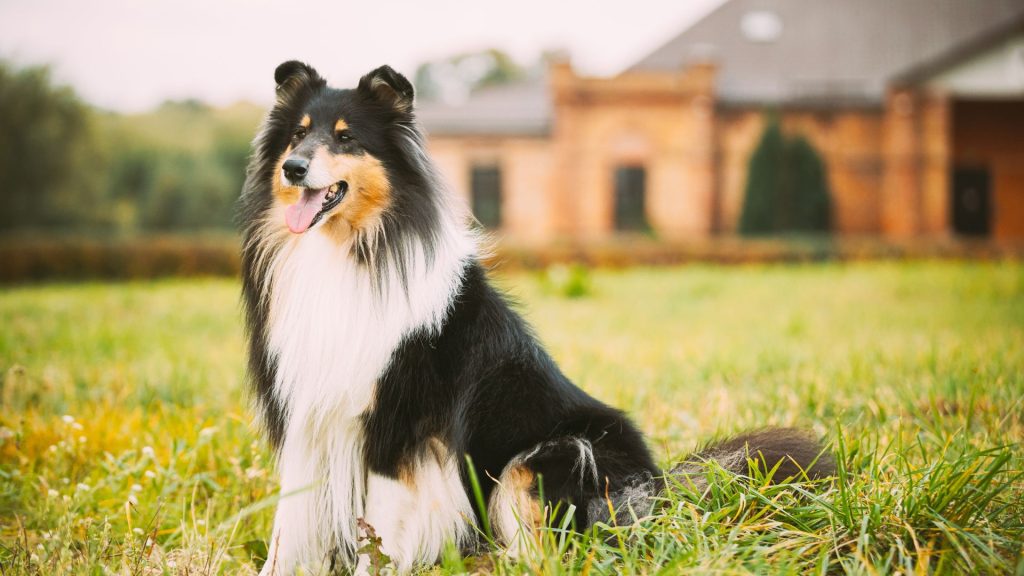
The Collie, a herding breed that originated in Scotland and Northern England, has a history dating back several centuries. Originally bred for herding sheep and cattle, Collies became renowned for their intelligence, agility, and loyalty. The breed gained international fame in the 19th century, particularly with Queen Victoria’s admiration for them, which greatly increased their popularity. The Collie is divided into two varieties: the Rough Collie, known for its long, luxurious coat, and the Smooth Collie, which has a short, dense coat. Both varieties share a common ancestry and were developed to work in the rugged terrains of the Scottish Highlands.
Physical Characteristics
Collies are medium to large-sized dogs with a graceful and athletic build. They typically weigh between 50-70 pounds and stand about 22-26 inches tall at the shoulder. Rough Collies have a long, dense double coat that comes in various colors, including sable and white, tricolor, blue merle, and white. Smooth Collies have a short, dense coat with similar color patterns. Both varieties have a distinctive, wedge-shaped head with a long, narrow muzzle, expressive almond-shaped eyes, and small, erect ears that tip forward. Their tails are long and carried low, adding to their elegant appearance. Collies are known for their balanced, agile physique and their distinctive, gentle expression.
Temperament and Personality
Collies are known for their gentle, friendly, and loyal nature. They are highly intelligent and eager to please, making them excellent companions and easy to train. Collies are good with children and other pets, often forming strong bonds with their families. Their herding background means they are naturally protective and alert, making them good watchdogs without being overly aggressive. Collies are also known for their sensitivity and respond best to positive reinforcement training methods. They are playful and energetic, enjoying interactive activities and exercise. Their gentle and affectionate temperament makes them wonderful family pets, and they are well-suited to a variety of living situations.
Grooming and Care Needs
The grooming needs of Collies vary depending on the variety. Rough Collies require regular brushing, at least two to three times a week, to prevent matting and reduce shedding. Their long coat needs extra attention, particularly around the ears, neck, and tail, where tangles are more likely to form. Smooth Collies require less frequent brushing, but still benefit from regular grooming to remove loose hair and maintain coat health. Both varieties should be bathed as needed, but not too frequently to avoid stripping the coat of natural oils.
Regular dental care, including brushing their teeth, is important to prevent dental issues. Their ears should be checked regularly for debris and cleaned as needed to avoid infections. Nail trimming should be done regularly to prevent overgrowth. Collies are active dogs that require daily exercise to stay healthy and happy. Long walks, playtime, and activities like obedience training or herding exercises are ideal for keeping them physically and mentally stimulated. Providing them with a balanced diet and regular veterinary check-ups will help ensure they live a long, healthy life.
Conclusion
Owning a medium fluffy dog breed offers a perfect balance of size and personality, making them ideal for various living situations and active adventures. These dogs are known for their friendly, affectionate, and loyal nature, making them excellent family pets. Their intelligence and trainability add to their versatility, suitable for activities ranging from herding to agility to being loving household companions. When choosing the right breed, consider factors such as energy levels, grooming needs, temperament, and living space to ensure a harmonious match with your lifestyle.
Adopting from shelters or rescue organizations is highly encouraged, as it saves lives and provides a rewarding experience. Shelters often have a variety of breeds and mixes, and their staff can offer valuable insights into each dog’s behavior and history, helping you make an informed decision. Adopting a dog not only gives them a second chance but also enriches your life with the joy and companionship of a furry friend.
For more articles on dog breeds, visit petfleck.com.

Hello, I’m Donna Carter, the founder and writer behind PetFleck.com. My journey with dogs started years ago, and it’s been a passion that has only grown stronger over time. I’ve always been fascinated by the unique behaviors and characteristics of different dog breeds, and this curiosity has led me to dive deep into the world of canine studies.
My love for dogs is the driving force behind everything I do. I’ve dedicated countless hours to researching and understanding the nuances of dog care, training, and breed-specific traits. This dedication helps me create content that is not only informative but also genuinely helpful for fellow dog lovers and owners.
At PetFleck, I combine my extensive knowledge and hands-on experience with my passion for dogs to provide valuable insights and tips. Whether it’s exploring different breeds or offering practical advice on dog care, I aim to share knowledge that makes a real difference in the lives of dogs and their families.
I’m thrilled to share my love for dogs with you through my writing. I hope my articles inspire and inform, helping you to better understand and appreciate the incredible bond we share with our furry friends.
Thank you for visiting PetFleck.com, and I look forward to connecting with you through our shared love of dogs!
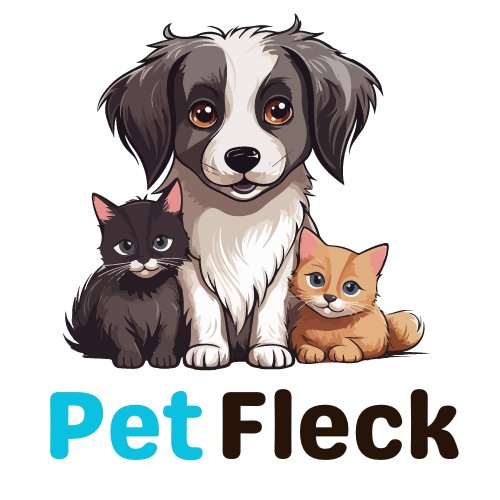

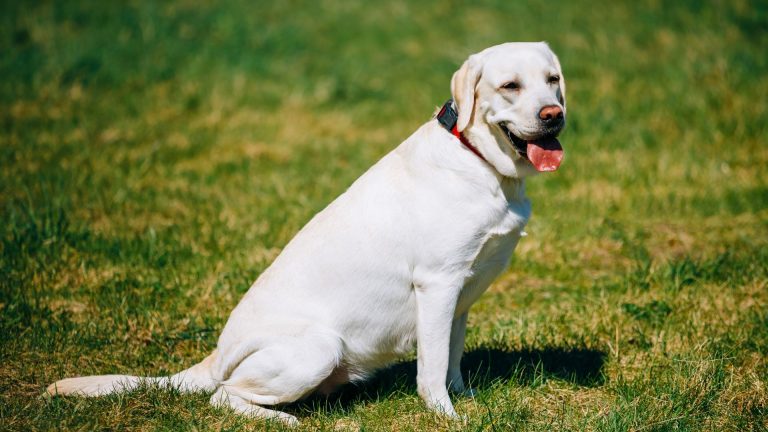
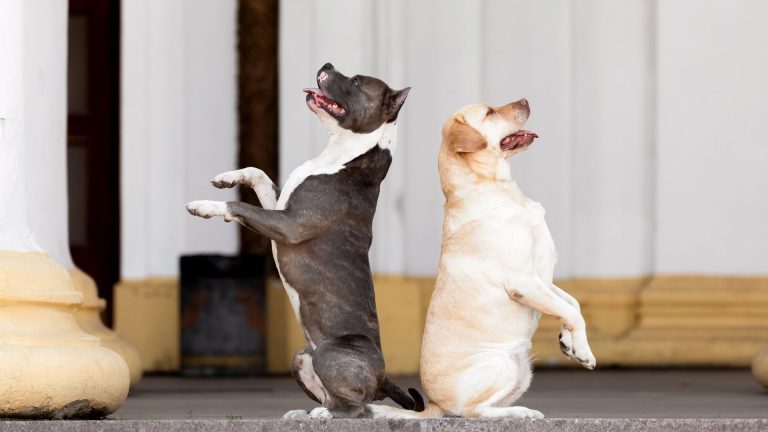
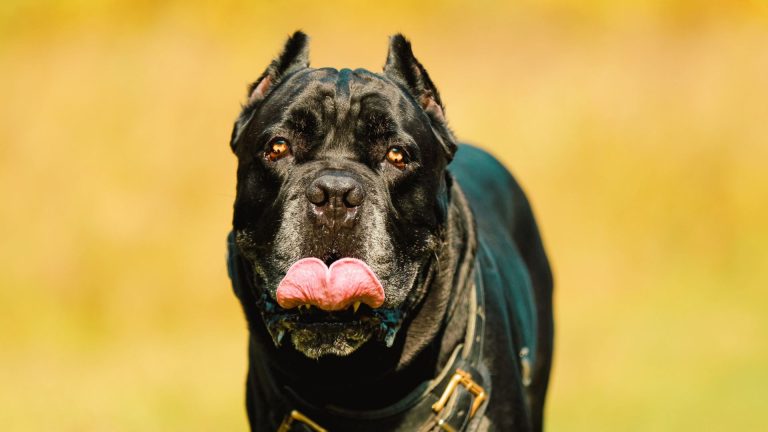
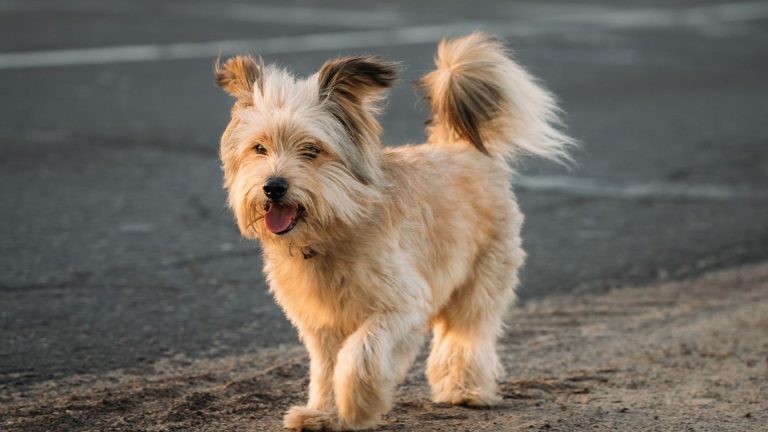
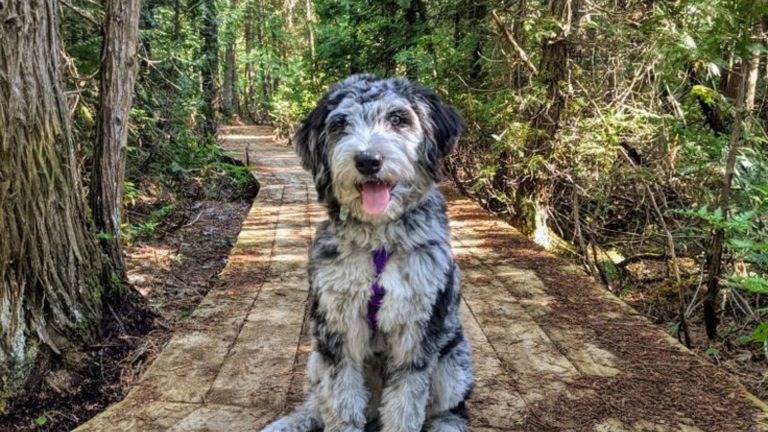
2 Comments